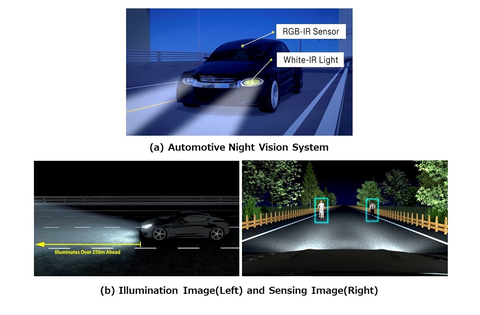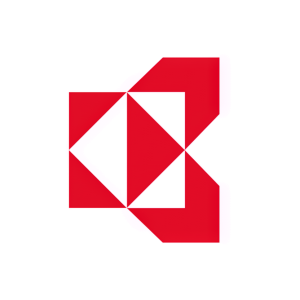Kyocera Develops World’s First* Automotive Night Vision System with White and Near-Infrared Light Diodes Integrated into a Single GaN Laser Device
Kyocera Corporation has launched an innovative Automotive Night Vision System designed to enhance road safety by identifying collision risks in low-visibility conditions, such as rain or fog. This system combines RGB-NIR sensors and proprietary Image-Fusion AI Technology for superior object recognition capabilities. The global market for such systems is projected to grow at a CAGR of over 16.5% from 2020 to 2027, indicating promising growth potential for Kyocera's technology. The company's commitment to R&D aims for commercialization post-2027.
- New Automotive Night Vision System expected to reduce traffic accidents and enhance driver safety.
- Utilizes innovative RGB-NIR sensor technology for improved object recognition accuracy.
- Projected growth in the Automotive Night Vision market, indicating strong future sales potential.
- Commercialization of the system is not expected until after 2027, delaying potential revenue gains.
Insights
Analyzing...
Solution combines RGB-NIR sensors and proprietary image-fusion AI technology for safer driving, better visibility at night and in inclement weather

Images for (a) Automotive Night Vision System and (b) Illumination Image (Left) and Sensing Image (Right) (Graphic: Business Wire)
Kyocera’s Automotive Night Vision features the first headlight in the world that can emit both white (RGB) and near-infrared (NIR) light on the same optical axis; this allows higher accuracy object recognition than alternative technologies. The system integrates RGB-NIR sensors and a unique “Image-Fusion AI Recognition Technology” developed by Kyocera for high performance object recognition. In addition, Kyocera has developed another generative AI feature to create training data for more cost-efficient learning and product development.
*For headlights using white and near-infrared light in a single SMD device (Kyocera research,
Video: Introducing Kyocera’s New Automotive Night Vision System
https://www.youtube.com/watch?v=q3Am3wZJXpE
Development Background
To reduce traffic accidents and promote autonomous driving, automakers will require more advanced hazard-detection systems. The global market for Automotive Night Vision Systems was estimated at approximately
+Source: Reportocean, “Global Automotive Night Vision System Market by Technology Type”
System Features and Benefits
[1] Laser headlight integrates white and near-infrared light on the same optical axis
Kyocera’s system integrates both white and near-infrared light from a laser headlight on a single optical axis. This eliminates image parallax and greatly enhances image recognition. The integrated headlight also incorporates an extremely bright, high-efficiency, miniaturized GaN laser developed by
[2] More accurate object recognition using Kyocera's proprietary fusion recognition AI technology
Kyocera’s vehicle-mounted RGB-NIR sensor uses original fusion recognition AI technology** developed by Kyocera’s
** Received the Symposium and Sensing via Image Information (SSII) Distinguished Academic Award.
[3] AI significantly reduces development costs while improving recognition performance
Conventional methods require collection of vast amounts of NIR training data, a time-consuming and costly process. Conversely, Kyocera’s AI technology generates training data automatically. As a result, this approach can significantly reduce training costs while maintaining high accuracy in recognition performance.
Future Developments
Kyocera will continue R&D for this system, aiming for commercialization after 2027. We will also contribute to making transportation safer and more secure through traffic-monitoring infrastructure technologies, such as smart road-side units (RSUs) and other equipment, while adapting our technologies to other diverse applications ranging from nighttime security to delivery systems.
View source version on businesswire.com: https://www.businesswire.com/news/home/20221025006215/en/
Head Office
TEL: +81-(0)75-604-3416
E-mail: webmaster.pressgl@kyocera.jp
Source:







